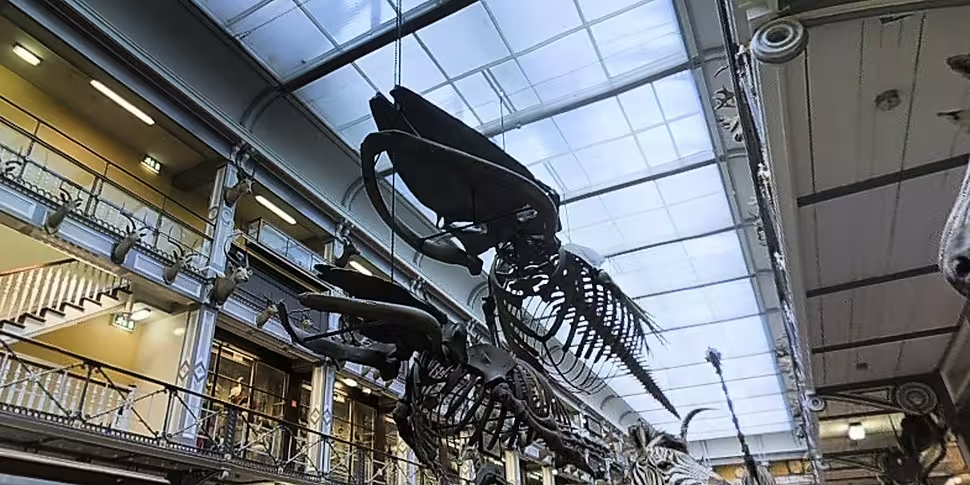The Natural History Museum is looking for someone to help take down two massive whale skeletons hanging from its ceiling.
The skeletons have been there since at least 1909, and the museum is looking for a conservator to help with the operation.
It is part of a wider plan of renovation at the museum.
Nigel Monaghan, keeper of the Natural History Museum, told Sean Moncrieff: "You can see these online, in fact you can tour the museum virtually on our website.
"But you're talking about a 20-metre long skeleton of a fin whale - which is the second biggest animal in the world after a blue whale.
"And hanging underneath it, only by comparison, is smaller and that's a humpback whale skeleton.
"And they've been up there since at least 1909 - we think the bigger one may have been up there a good bit longer than that."
He said taking them down will be painstaking, one bone at a time.
"The general plan is that you build up scaffolding to the lower level and start dismantling the lower skeleton, and take away each individual bone - which is the way they would have been put up.
"They would have been assembled dry on the ground to work out how it works, and some metal plates and bolts and things put together back in Victorian times at this stage."
"We know quite a lot about the lower whale: it was done for £43.
"Now I don't think it's going to cost £43 to get it out and down - but it's a highly-specialised task".
"We have engineers, scaffolders and all sorts of other people lined up and we've the support of the office of Public Works.
"But we're looking for a conservator who specialises in animal bone, because we're very interested in the crunchy bits around every bolt and joint so that we don't damage anything when we take it down".
The skeleton will then spend a few years being restored and cleaned.
"It hasn't had a vacuum since 1988", Mr Monaghan said.
"There's the dust of a century, and thinking back in our particular museum it's also got a lovely oily, gooey surface - because we had gas lighting in our building in that big empty space and the oily mist from gas lighting is horrible stuff.
"And whales are also oily animals, that's why they were hunted, and the whales themselves the bones leak oil.
"Particularly in very hot weather, you'll actually see whale bones in museums actually go slightly tacky to the touch."
"The thing about the whales is that the steal framework - these big A frames up in the roof space that the bolts and the big bars hang from - that the whales are suspended from... those are in the way of us restoring the roof.
"So we have to take the whales down: it's a great opportunity to learn a lot more about them, make them more stable and solid and secure and clean them thoroughly."









